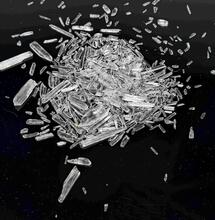Pipe Classic Six

Every year for the last six years the Bern Gallery has held the 'Pipe Classic', a battle royale of a dozen of the world's best and most exciting pipe artists, where winners are awarded a trophy and a new torch from Glass Torch Technologies.
It's fall. The leaves are beginning to change colors here in Burlington, Vermont. Fortunately the month of September also holds a bit of excitement, because every year for the last six years the Bern Gallery has held the 'Pipe Classic', a battle royale of a dozen of the world's best and most exciting pipe artists, where winners are awarded a trophy and a new torch from Glass Torch Technologies.
This past autumn was no exception. Each artist has six hours to do their thing. I already had spoken with Steve Bates about the nature of his piece so I knew what was coming. He had decided to enter the contest without having rehearsed his pipe and in fact had only decided days before just exactly what to make, but he seemed comfortable. Speaking with Erik Anders (EA) revealed an entirely different approach, one that involved much thought and practice.
In fact, he went through his piece three times before the competition. Now, as for Hickory, I could see right away that he was ready. This was a man who had both watched and participated in the Pipe Classic before. I could see by his expression that he had put much thought and energy into designing a piece that would maximize his skills and aesthetic.
As the day progressed Erik's strangely-shaped piece grew until finally an 'oil lantern' started to emerge. Unfortunately, due to a high propane pressure output, the color he was using reduced, cracked, and ultimately destroyed his piece. Things like this are what make competing in a foreign environment, under time constraints and with an audience, so difficult. Bates had everyone guessing as to what exactly he was doing but it was clear that fire would be involved.
Meanwhile, with laser beam focus, the parts that would combine to make Hickory's piece were getting big and showing the form of a tree. I ping-ponged back and forth until at one point in the background I could see Tito and Mikeala discussing something that seemed serious. I approached and was shortly informed that D-Wreck had decided he could not make it to Burlington for the competition. It was something about how he had just gotten his period and was having trouble finding more authentic Cherokee hair tampons.
The result was a coin toss between Chris Carlson and I, who were present in order to document the event, which I won and thus I became the 12th man in the 2011 Pipe Classic. From Austin, Texas, Salt was known for the Eye Face tooth tongue claw horn style, or the 'Salt style'. The end of the day came quickly and sent the competitors off to a hotel to rest. Day Two: The first heat began at nine AM with EA, Bates and Hickory trying to finish their entries. Hickory jumped right in. Erik, in truly professional form, charges forward and begins to execute his piece in order to salvage his entry.
Meanwhile, Bates had actually finished all his lampworking the day before, so he is outside wowing the crowd by demonstrating his 'flame-thrower pipe'. It runs on butane and throws up to a five-foot diameter ball of flame, eight feet out from the weapon. As the first heat comes to an end, Erik and Hickory finish their lampworking and everyone will have an entry.
The second heat of day two began with Saki Bomb, Matt Mclamb and JOP. Saki seems a bit nervous at first, but settles into a nice rhythm. JOP begins with some solid prep work. When asked, he says he has practiced but is going to make a piece that is double the size of what he trialled. Meanwhile Matt looks utterly comfortable, and in fact he produces two strange jigs and fixes over 30 rods of glass, cut to size, in each.
He dances and sings along with the music playing while the spectators discuss in wonder "what could he be making?" Day two ends with only a few minor hiccups from each competitor. The atmosphere of the pipe classic stays true to its reputation of an intense competition that becomes a party, with all sorts of members from the glass scene present. Day Three: As the third day begins, Matt says he has some minor checks to deal with. I've guessed that his problem is with the wings, but if he can handle this issue, he is probably going to have smooth sailing from there on in. Saki is reluctant to reveal too much, but from what I can gather, she has had some minor setbacks.
JOP starts the day by clamming up in some headphones that I suspect weren't necessarily on. This seems to be a focus-oriented move meant to offset the fact that he is a bit behind his schedule and outside of his comfort zone. The day wears on and the scale and nature of JOP's piece is revealed; the phrase 'go big or go home' doesn't quite cover it. When I check back with Matt, he is wrapping things up and has some time to spare for cold working. Things have gone well for him. His game face is solid.
Saki works feverishly and ends the day with a large number of finished pieces that are meant to go together - and only three minutes to spare. Unfortunately, the unfamiliar shop time constraints and huge scale factors all come together - and with very little time left, JOP's piece breaks. The line-up for the second heat of day three is The Worm, Dosh, and myself. Now I'm in an interesting position, since I'm both reporting on the event and competing, but I also happen to know what many of the other competitors are going to make. The third day ends with all of us on track and either on or ahead of schedule.
Day Four: We arrived the morning of day four around eight AM. By nine, the torches were back on and we were all off and running. Dosh had looked as though he had almost finished his piece the day before, but started adding attachments and really filling it out. When I check in on Worm, I am surprised to see that his piece is much bigger than the practice one I had seen, and that he is able to leave it out of the kiln for a ridiculously long time, while still moving the flame around the piece to polish welds.
Having completed the main part of my entry, I'm using it to visually measure and formulate the rest of my composition. As the day progresses so does my idea and my excitement. At some point during the fourth day, Adam G and Cmazz walk into the Bern Gallery wearing windbreakers that can be seen from space. By the end of our heat, three successfully finished pieces are in the box. The second heat of day four brought three heavy hitters to the plate. Adam G, Dellene Peralta and Hamm all reported to set up.
Only 15 or so minutes into the day, it was discovered that Hamm had an illegal tube prep due to some confusion about the rules. Things come close to him not participating, but very quickly a solution is found and things go forward. The Pipe Classic's reputation of striving to be fair prevails. To the average spectator, Adam seems to be making a ray gun, but his reaction to my saying so told the story that he had a few tricks up his neon-green windbreaker sleeve. As the hour grows late, Dellene's pieces take shape as some sort of wagon. I asked, but she was being coy.
Time runs out on the fourth day and all seems to have gone fairly well. Day Five: The fifth day begins - game faces fixed on each contestant. As Dellene gets further into her piece, a figure about 12 ft. tall started to emerge. He had frills and what Dellene told me was a Masonic symbol. Naturally I had a lot more questions but she was competing, so I decided not to pry. Hamm's piece really started to tell a story. The sculptural element that before looked like a tree, started to take the shape of a fetus with root-like hands and feet, and a second element entered the picture that I can only describe as a penguin. All the while, Adam G's piece looked like a ray gun, except for the shoulder stock that he had recently added, changing it up a bit.
By late in the day all three contestants were reporting the same thing: "I'm gonna be cutting it close," but as I spoke with Hamm he actually bet me five dollars that the time crunch was going to make his piece crack. He pretty much called the time of the crack to the second. It was brutal. Dellene had her signature look - half pissed-off, half in pain - which meant time was tight, but she was doing well. I walked back to Hamm and was amazed to see he had begun working out the gnarly crack with a fluffy bright flame. He is making measured progress as I return to watch the others. As I get up close I notice that Adam G has put on the fabled Power Glove to attack the other side of his crossbow.
This was a bold move, but as the curved piece snapped and crashed to the ground, I couldn't help but wonder if the Power Glove was too much power for such a delicate move. Time is so short and Adam's adherence to his aesthetic, so strict that he knows the ten minutes left will not be enough to finish the way he wants to, and opts to withdraw and finish over time. Hamm, meanwhile, had fixed his piece only to have it crack somewhere else, and subsequently had fixed that crack - only to have the first one come back even worse.
Amazingly he keeps his piece together and finishes with moments to spare. Simultaneously, Dellene is scrambling to finish and somehow does so with less than a minute on the clock. Day five ends with Dellene and Hamm squeaking it out, and Adam finishing a couple of hours over. Judgment day arrived and the artists all began to slowly collect their pieces and walk over to the local bar where the closing ceremony was held. Once the pieces were set up and the judges arrived, hot wings, gravy fries and cupcakes were served as the contestants mingled with the judges and explained their entries in detail.
The diversity and quality of the work made the judging process difficult. In the end, the winners were as follows: In third place Dosher, in second place Matt Mclamb, and finally your winner of the 2011 pipe classic - Hickory. The trophies are handed out with congratulations, and after a bit of good old fashioned celebration everyone makes their way back to the Bern Gallery for one last bit of business. As is tradition with the Classic, all serious buyers and the 12 artists crowd around the counters of the Bern Gallery, where Mikeala stands behind a row of pipe entries and begins the auction. It is a fast paced free-for-all as bids are yelled out, and one by one the pieces were all sold off - until finally only the winning piece remained.
“Two shop owners spit larger and larger numbers back and forth at each other until finally, the bidding war was over and the winning piece had been sold for a record price of $5,400„
Many people, including myself, bid on Hickory's Tree Tube, but quickly the price shot up and only a few remained - and then only two. I watched as these two shop owners spit larger and larger numbers back and forth at each other until finally, with a large jump in bid and a stare that would have melted a hole in most people, the bidding war was over and the winning piece had been sold for a record price of $5,400.
It had been one for the books again at the Bern Gallery, and naught was left but for everyone to head to the woods for a huge party involving alcohol, a bonfire, various clouds of smoke, gunshots, tequila shots, bad jokes, good conversation, pre-emptive hugs and some late night bacon cooking. In closing I would just like to say that, after being involved with the Pipe Classic for three years now, I would recommend it as an experience to anyone interested in the pipe culture. because pipe events just don't get any better than this! www.pipeclassic.com info@bernglass.com



